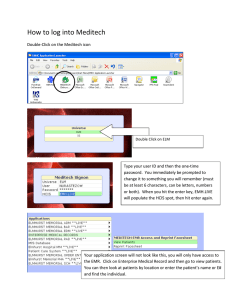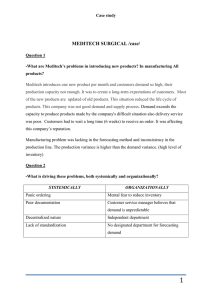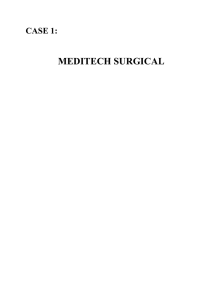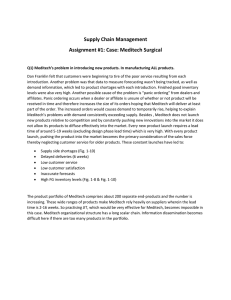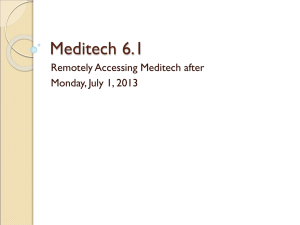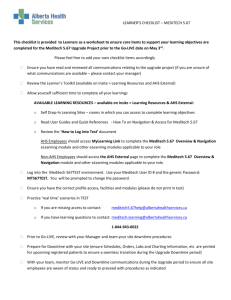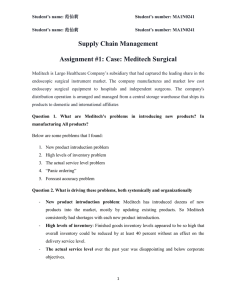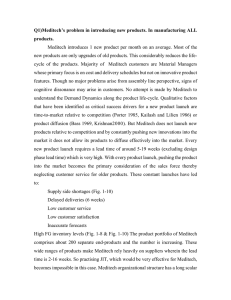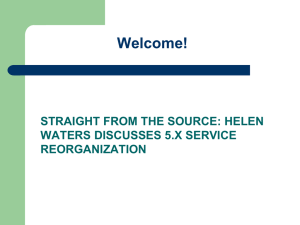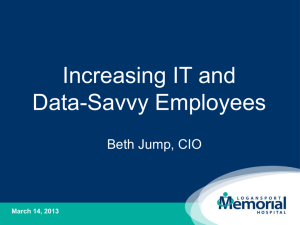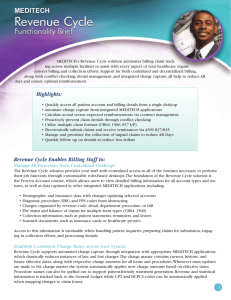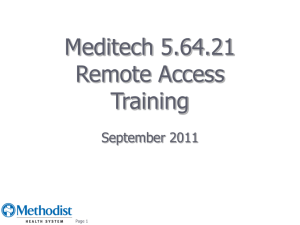Cost Accounting
advertisement
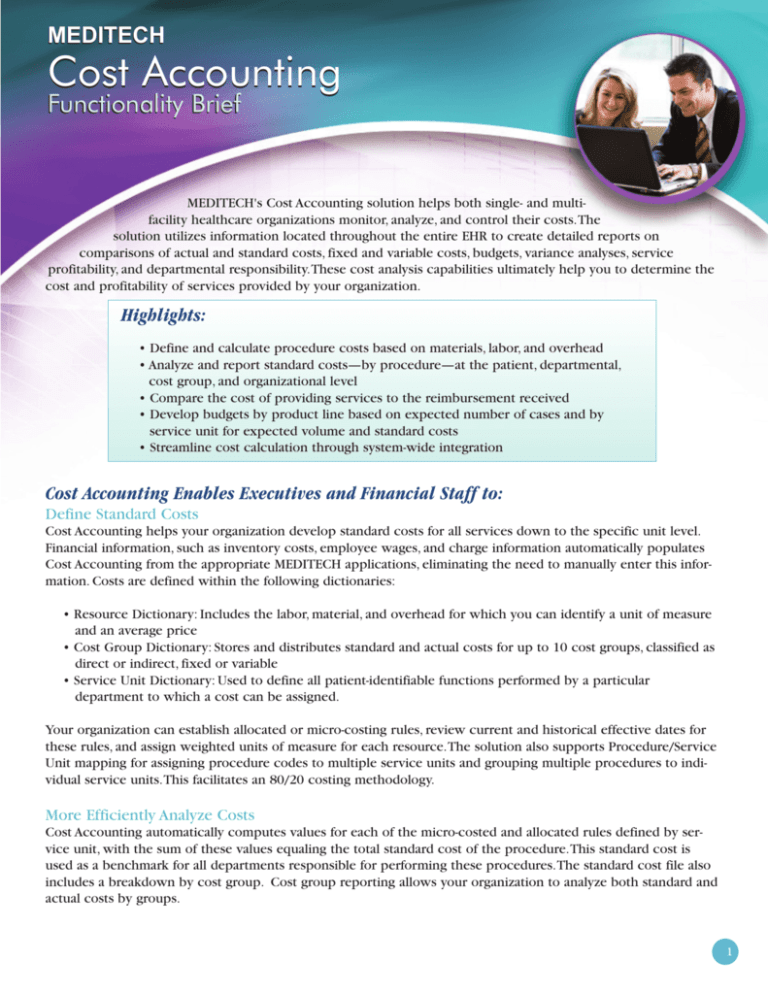
MEDITECH Cost Accounting Functionality Brief MEDITECH's Cost Accounting solution helps both single- and multifacility healthcare organizations monitor, analyze, and control their costs. The solution utilizes information located throughout the entire EHR to create detailed reports on comparisons of actual and standard costs, fixed and variable costs, budgets, variance analyses, service profitability, and departmental responsibility. These cost analysis capabilities ultimately help you to determine the cost and profitability of services provided by your organization. Highlights: • Define and calculate procedure costs based on materials, labor, and overhead • Analyze and report standard costs­—by procedure—at the patient, departmental, cost group, and organizational level • Compare the cost of providing services to the reimbursement received • Develop budgets by product line based on expected number of cases and by service unit for expected volume and standard costs • Streamline cost calculation through system-wide integration Cost Accounting Enables Executives and Financial Staff to: Define Standard Costs Cost Accounting helps your organization develop standard costs for all services down to the specific unit level. Financial information, such as inventory costs, employee wages, and charge information automatically populates Cost Accounting from the appropriate MEDITECH applications, eliminating the need to manually enter this information. Costs are defined within the following dictionaries: • Resource Dictionary: Includes the labor, material, and overhead for which you can identify a unit of measure and an average price • Cost Group Dictionary: Stores and distributes standard and actual costs for up to 10 cost groups, classified as direct or indirect, fixed or variable • Service Unit Dictionary: Used to define all patient-identifiable functions performed by a particular department to which a cost can be assigned. Your organization can establish allocated or micro-costing rules, review current and historical effective dates for these rules, and assign weighted units of measure for each resource. The solution also supports Procedure/Service Unit mapping for assigning procedure codes to multiple service units and grouping multiple procedures to individual service units. This facilitates an 80/20 costing methodology. More Efficiently Analyze Costs Cost Accounting automatically computes values for each of the micro-costed and allocated rules defined by service unit, with the sum of these values equaling the total standard cost of the procedure. This standard cost is used as a benchmark for all departments responsible for performing these procedures. The standard cost file also includes a breakdown by cost group. Cost group reporting allows your organization to analyze both standard and actual costs by groups. 11 Calculate Profitability and Need for Specific Procedures and Services Integration between Cost Accounting and MEDITECH's Abstracting and Revenue Cycle solutions provides users with the ability to generate multiple profitability reports based on various selection criteria. Information pulled from Abstracting, such as the total patient cost and DRG codes, enables users to compare: • The total standard cost of providing services to a patient against reimbursement activity cost per day • Cost, charge, and reimbursement data (in detailed or summarized format) for a group of patients selected • The cost of care for multiple patients assigned similar DRGs or who received similar services or procedures to determine service need and profitability. Analyze Profitability at the Departmental Level Cost Accounting creates departmental reports, which illustrate standard costs and service usage by department. These reports allow for budget comparison and variance analysis by managers throughout the organization, including: • Department variance reports: Contain all costs incurred and related variances at the department level • Department Labor Variance Analysis Report: Details labor cost by department, cost group, and job code • Flexible Budget Report: Details, by department, a comparison of cost based on both fixed and variable amounts. Accurately Budget by Department Cost Accounting provides managers with volume and cost data in order to help prepare budgets. The system: • Uses past data to develop profile service unit usage by user-defined product line(s) • Determines expected volumes of service units and expected standard costs by using expected product line or service unit volumes for an upcoming year • Supports budgeting by product line(s) and by service units based on actual volumes for previous periods. Reap the Benefits of Integration Cost Accounting utilizes information captured from throughout the MEDITECH EHR to create detailed reports that evaluate costs on a procedural, departmental, and patient level. This integration streamlines information exchange, prevents redundant data entry and duplication of effort, and generates reports that contain the most up-to-date, comprehensive information. Integration benefits include the ability to: • Determine the cost of a service unit using a one-to-one correlation with procedure codes carried forward from MEDITECH's Revenue Cycle • Calculate reimbursement using daily and period-end data from Revenue Cycle • Report on labor variance using labor productive hours and dollars from Payroll • Pull forward and store past and present average rates for micro-costed labor and material costs from Payroll and Materials Management • Map General Ledger expenses to cost groups by EOC or GL account • Display how micro-costed and allocated units relate to the General Ledger. For more information about us, contact a MEDITECH Marketing Consultant. June 2, 2010 Medical Information Technology, Inc. | MEDITECH Circle Westwood, MA 02090 | 781-821-3000 | www.meditech.com 2
